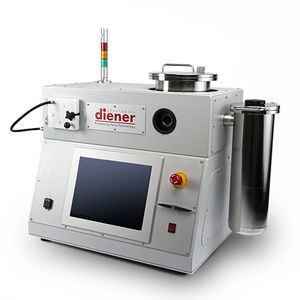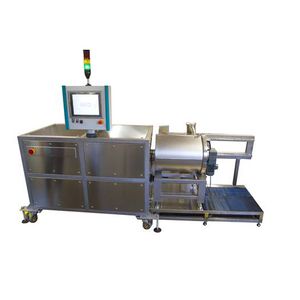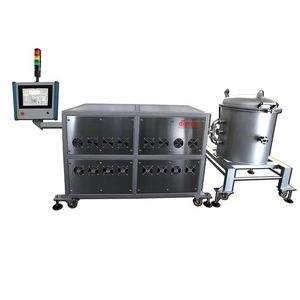
- Industrial machines and equipment
- Surface Treatment Equipment
- Coating application system
- Diener electronic GmbH & Co. KG
Coating application system Parylene P260



Add to favorites
Compare this product
Description
Parylene is the short designation of the polymer group of poly(para-xylylenes). The polymers consist of different substituted para-xylylenes. The original basis for coating are dimers. This is a molecular compound consisting of two identical sub-units, the so-called monomers.
Parylene coatings offer a large number of benefits. Parylenes...
are completely conformal, i.e. they adapt even to complex substrate contours such as sharp edges, bore holes or blind holes
are pinhole-free already from coat thicknesses of approx. 0.5 µm
are chemically insoluble and resistant against a large number of chemicals
have very good barrier properties against moisture and chemicals
have a high dielectric strength
have dry lubricating properties (low coefficient of friction)
are hydrophobic: wetting angle for H2O between 92° and 98°
are transparent between 90 and 96 % in the visible wavelength range (depending on type)
are biocompatible: parylenes of the types C and N can be separated which can be certified to USP Class VI, ISO 10993 and FDA.
Technical data
Coating substance
Parylene N, C, D, F-VT4, F-AF4
Possible coat thicknesses
0.05 to 100 micrometers
Dimensions
Width approx. 2600 mm
Depth approx. 1000 mm
Height approx. 2000 mm
Pyrolysis
4 kW / max 850 °C
Chamber
Diameter: 640 mm
Height: 800 mm
Carousel
Diameter: 560 mm
Height: 650 mm
Exhaust air
42 mm tube
Additional options
Heating coat for improved separation of parylene D
Heat exchanger for improved separation of parylene N and F
LF generator for pretreatment
Silane evaporation system
Coat thickness measuring device
Catalogs
Parylene P260
2 Pages
Other Diener electronic GmbH & Co. KG products
Parylene systems
Related Searches
- Surface treatment machine
- Vacuum chamber
- Plasma surface treatment machine
- Coating application system
- Automatic surface treatment machine
- Laboratory surface treatment machine
- Surface treatment machine for the printing industry
- PC-controllable surface treatment machine
- 3D part surface treatment machine
- Medical device surface treatment machine
- Portable surface treatment machine
- Vacuum surface treatment machine
- Desmear surface treatment machine
- Fabric surface treatment machine
- Label printing surface treatment machine
- Plate surface treatment machine
- Printed circuit surface treatment machine
- Surface treatment machine for the eyewear sector
- Surface analysis vacuum chamber
- Atmospheric plasma generator
*Prices are pre-tax. They exclude delivery charges and customs duties and do not include additional charges for installation or activation options. Prices are indicative only and may vary by country, with changes to the cost of raw materials and exchange rates.






